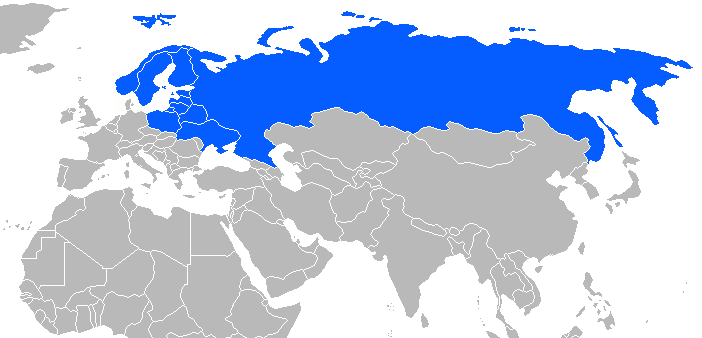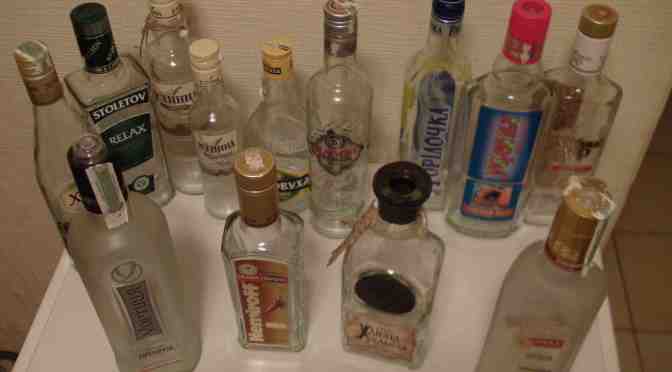
Horilka: a fermented liquor made from wheat, potatoes, honey and sometimes shoe laces (at least it seems like it.)
It’s no secret, I enjoy a good drink or two, much to everybody’s dismay. One friend even told me, “Steve, when you drink you don’t need condoms cause you ain’t getting laid anyway.” Whatever that means. But it’s part of travelling and it’s part of living, I believe, so, in the end, trying different horilkas in Ukraine is a type of cultural research. As a follow up to my extensive research on Polish vodkas (you can read Part 1 for the procedures and protocols and Part 2 for a list of brands) I have completed my research on Ukrainian vodka, or, as the Ukrainians call it, horilka. (Russians say “gorilka” which always reminds me of gorillas.)
Although horilka’s invention is shrouded in mystery, I’m fond of the story that claims that the Devil invented it. He invited Jesus and the Saints Peter and Paul down to Hell to try his new drink. After three shots, the trio got up to leave but the Devil stopped them, saying the first two shots were free, the third had to be paid for. As a result, Jesus said he could have all the souls that died from drinking vodka. You can read the full story here. So there you go, be careful. (There’s a more in-depth and possibly more accurate history given here.)
Some folks have wondered how I can evaluate alcohol. Well, I’m no professional and I don’t pretend to be, but my list comprises the horilkas that impressed me and the ones that didn’t. If you were to venture into Ukraine today, the “Big 4” I mention would be the ones I recommend that you try or give as gifts. Personal tastes will differ from mine. It is generally though, quite accurately, that the higher the price of a standard 750ml bottle, the better the horilka. As with many other alcoholic drinks, there are the consumer brands and the premium brands with higher price tags. I have divided my list into three parts, “Big 4”, “Runners-up”, and “To avoid.”
I’m told that the best way to judge whether or not a bottle of horilka is any good is to check how you feel in the morning. If you feel like shit, the horilka wasn’t any good. But if you feel good, then the horilka definitely warrants another try. Ultimately, the quality of a bottle of horilka depends on the purity of the alcohol and its distillation process, particularly the quality of water used, which, sadly, in some parts of Ukraine, is less than desirable. This research makes me think that maybe I should try making my own, or “samohonka” as the Ukrainians call it.
As for serving horilka, as a guest at many a table I was told that only one hand is supposed to pour shots, kinda like a “designated shot pourer” who would, in theory, moderate consumption. But the idea, or the person, never seems to last. Not only that, some enterprising youths have figured that serving horilka in shot glasses was too obvious so now they’re soaking their tampons in horilka/vodka. Even the boys! (Though, an even more enterprising and scientific blogger has disproved the idea that it works.) And, like the Poles, Ukrainians prefer to have something to eat while imbibing (Russians, I’m told, don’t have anything to eat while drinking.)

Side dishes served with the horilka ranged from cookies and biscuits to chocolate and candy to the more traditional salty dead fish (y’know, kinda like the stuff they sell in Korea in packages), pickles and herring. The North American equivalents would probably be peanuts, pistachios or that yummy Doritos mix with the sunchips and pretzels… Mmm! Uncooked salo (pure pig fat) is also a good side dish, served with black bread, butter and garlic. I’m also very partial to the Ukrainian Easter bread, paska, a rich dessert bread usually available only around Easter time.
Some folks, especially in North American, prefer to a 2:1 or 3:1 ratio of water-to-horilka, but not in Ukraine. In all the drinking circles I participated in, the horilka was typically shot down in one gulp, then followed by something to eat. There were various explanations for this custom. The first included to get the horilka taste out of your mouth, but that only made me wonder why you’d drink it in the first place. The second explanation was to help soak up the alcohol and keep you from getting stumbling drunk. The third explanation was that if you drank horilka straight you could get stomach cancer if you didn’t pad your stomach lining with food. The last one wasn’t too far out of the question as one attractive Portuguese doctor told me that, yes, alcohol can in fact cause cancer, though you’d get it in the mouth before you developed stomach cancer. Duly noted.
Finally, ambiance is pretty important. Chairs, tables, a level surface and the fewer stairs and sharp objects around the better. Music is helpful. The folks I drank with seemed to prefer rock and metal from the ’80s, but the best song I heard was some song called “Gagarin” (after the famous Soviet astronaut and first man in space), though I don’t know who plays it. Here in Canada, Ukrainian pop music does well at vodka drinking parties if only because it ignites the nationalistic fervour in the diaspora. And, as always, kudos to my former group, Zrada, for creating great drinking music. (Yes, I play drums on the first two albums.) 🙂
As a final note, I’d like to promote responsible drinking. While in Poland I was told that there were various amounts of problems with drinking and alcoholism in general. I was told that a Pole wouldn’t admit he had a problem until he was consuming more than a bottle every day. A Uke wouldn’t admit he had a problem until he was consuming more than two bottles a day. A Ruskie, however, wouldn’t admit that he had a problem until he was consuming more than 4 bottles a day. So it goes, please be responsible and don’t ruin it for the rest of us. Most of all, keep your tampons dry.
